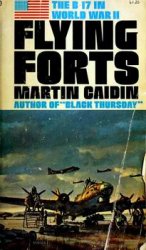In the late 19th century, the descriptive term jingoes applied to those who displayed an intense, unquestioning patriotism while advocating an aggressive foreign policy. In 1878 the term was used in England to describe the followers of Prime Minister Benjamin Disraeli, who sought to use the British fleet to check the Russian advances in the Black Sea. The group adopted a theme song whose refrain went:
We don’t want to fight, but, by jingo, if we do,
We’ve got the ships,
We’ve got the men,
We’ve got the money, too.
The “jingo” tag soon began to be used pejoratively in the United States for aggressive imperialists who would go to war to acquire overseas territories and naval bases. The opponents of the jingoes thought them manic, impulsive, possessed of limited intelligence, and oblivious to the consequences of war.
—Timothy E. Vislocky
Johnstown flood (May 31, 1889)
On May 31, 1889, the South Fork Dam in western Pennsylvania broke, pouring 20 million tons of water downstream, inundating Johnstown 15 miles below, and killing approximately 2,200 people. The flood and its aftermath demonstrate dominant themes of the Gilded Age: The doctrine of laissez-faire, very much in vogue, discouraged government inspection or regulation of the dam. Belief in individualism enabled people to do as they wished with their property, even to the point of endangering others. Casualness bordering on callousness was rampant. The owners of the poorly maintained South Fork Dam were wealthy and prominent Pittsburghers who were never held accountable for their carelessness. But when the disaster struck, ordinary people proved to be heroes, and a spirit of cooperation prevailed as almost everyone put aside their personal losses and cared for the injured, buried the dead, and cleared the debris. Warmhearted people from all over—even other countries—contributed more than $3.7 million and trainloads of provisions.
Originally part of Pennsylvania’s Main Line canal system, the South Fork Dam had been built to supply the canal west of Johnstown with water during the dry summer months. It was soon rendered obsolete by the Pennsylvania Railroad, fell into disrepair, and was in 1879 acquired and inadequately patched up by the South Fork Fishing and Hunting Club (among its members were Andrew Carnegie and Henry Clay Frick).
Following an extremely heavy rainfall, the dam broke and water cascaded down the narrow valley, devastating Johnstown in 10 minutes. Houses were swept off their foundations and split apart; their inhabitants hurled about or clinging to the debris that lodged in a massive jam at the stone railroad bridge on the downstream side of town. More than 500 people who had not been drowned or crushed were tangled in the debris. Rescue work proceeded slowly because few tools were available, and that evening the debris caught fire and as many as 80 men, women, and children perished.
Those who survived the flood and the fire awoke on June 1 to a dismal day but coped with the disaster. Rafts were built to aid in rescue operations, and committees were formed to bury the dead and care for the injured. The next day a relief train arrived from Pittsburgh, and by that night more than 1,000 doctors, undertakers, workmen, and newspapermen had come. Clara Barton and her newly organized Red Cross soon arrived and remained for five months rendering aid to people in need. Andrew Carnegie also came and characteristically promised Johnstown a new library. Life in time returned to normal. Not one cent, however, was realized from the damage suits that followed the flood.
Further reading: David G. McCullough, The Johnstown Flood (New York: Simon & Schuster, 1968).
Joseph, Chief See Nez Perce War.




 World History
World History









